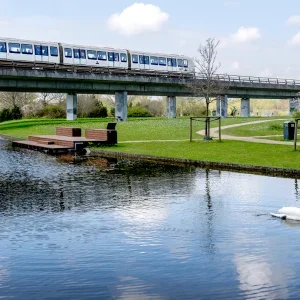Hundreds of sightseers attended a preview of Tokyo’s latest underground passageway — a 900m tunnel in Minato Ward on 23 March.
More than 38,000 vehicles are expected use the Tsukiji-Toranomon Tunnel every day, bypassing one of the capital’s busiest business quarters and alleviating traffic congestion above ground.
The Tsukiji-Toranomon Tunnel is 2m below the surface, and is just 300mm from an underground utility conduit jointly operated by gas, water and telecommunications companies that runs beneath it.
If the Tsukiji-Toranomon Tunnel is extended south towards the waterfront in the next few years as scheduled, it will also require the route to be squeezed into a space that would leave it only 2m from the Toei Asakusa Line below.
The Tsukiji-Toranomon Tunnel, enforced with multiple quake-resistant support beams, can withstand tremours on par with the Great Kanto Earthquake of 1923 and the Great Hanshin Earthquake of 1995. The tunnel has also been positioned to avoid damage in the event of a quake generating the highest possible tsunami in Tokyo Bay, the metropolitan government said.







